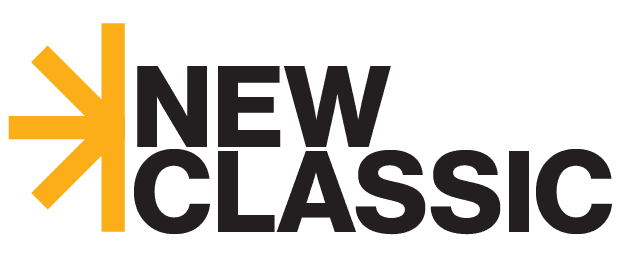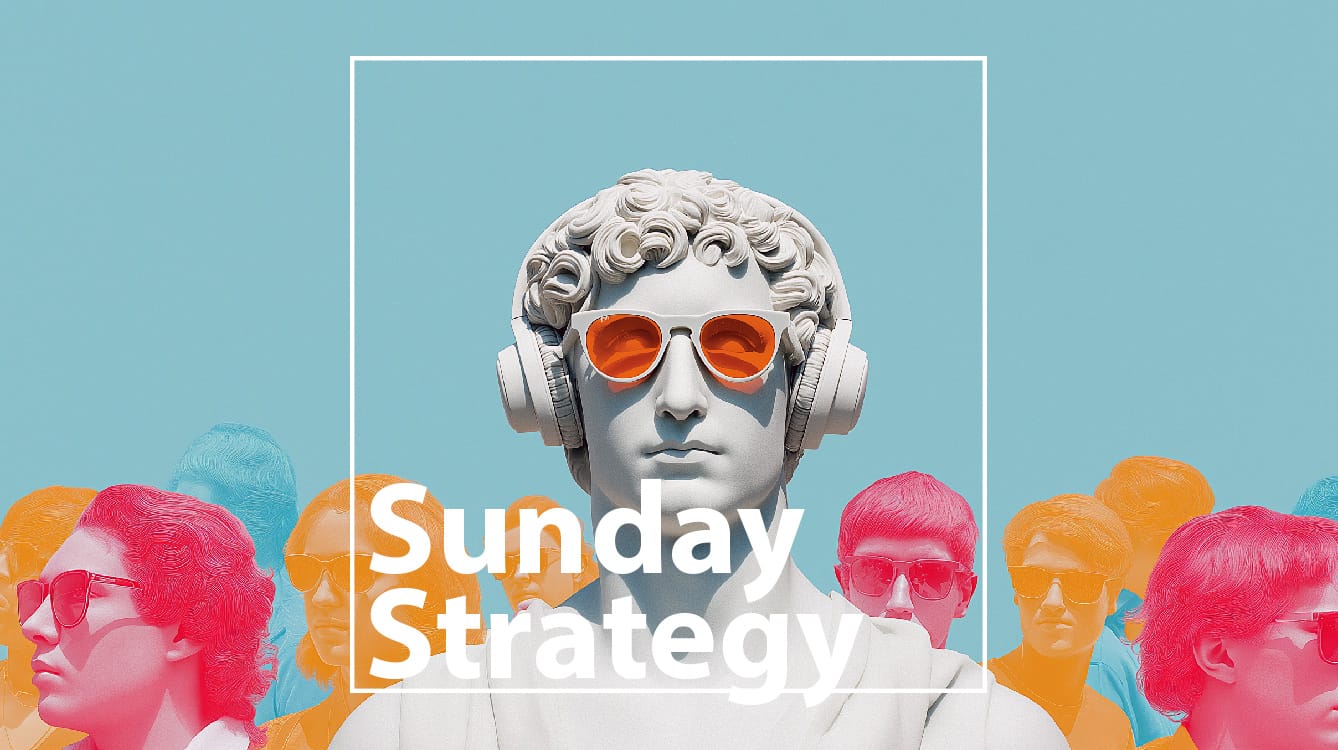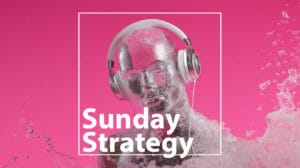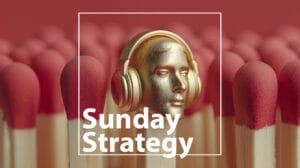In this issue of Sunday Strategy, we look at four stories to think about next week, including: Meta Ray-Ban vs. Google Glass, The Limits of Turning Cringe Into Cool, Understanding US Cancel Culture, How People Actually Use AI and Not Just Connected, But Globally Online.
In addition, we have ads from: Paddy Power, Anthropic and EA Skate.
// Stories of the Week:
1.) Why Aren’t Meta Ray-Bans Another Google Glass?
Meta’s announcement of a new version of its Meta Ray-Bans, featuring a heads up display, saw the brand simultaneously enter new and surprisingly nostalgic territory. More than ten years on from Google Glass (Google’s infamous foray into wearable technology), we’re seeing a return to mass wearable displays – but what’s changed since the age of ‘Glassholes’?
While both feature cameras and displays, the similarities stop there. Meta seems to have learned from Glass and enacted a long term plan to avoid its fate. Glass retailed at $1,500, with a design that stood out in public – creating major privacy concerns around a small number of users. Meta’s Ray-Bans are visually similar to normal sunglasses, though the display version is slightly chunkier, and nods to privacy concerns exist in features like an LED to show its recording.
Privacy concerns haven’t gone away (recent research shows attitudes between owners and non-owners are polarizing), but the greater ubiquity of Meta’s Ray-Bans, from design similarity and greater adoption through lower price points, helps Meta keep a lower profile than Glass. In a way, Meta’s camera only version can be seen as an investment in building potential for this version – creating a user base to foster acceptance. Smart eyewear customers also show greater interest in fashion brands, which has helped position Meta’s device as a fashion accessory with technology over a purely technological device. Whereas Glass created a sense of stand-out innovation (for good or bad), Meta Ray-Bans don’t aim to stand out in the same way. However, as Meta adds greater technical cues, such as wrist controls, the risk exists that it can undo the heritage it has built and fall into Glass 2.0 territory.
2.) Metal Braces & the Limits of Turning Cringe Into Cool
Can younger generations turn everything that used to be cringe into something new? Despite terms like ‘brace face’ and ‘tinsel teeth’ being traumatic staples of teenage years for many, metal braces may be riding a wave of cultural opportunity vs. invisible alternatives.
A recent survey by the American Association of Orthodontists shows metal braces, having never really gone away, are on the rise (77% of treatments are metal, up from 75% in 2022) and stealing share from invisible or clear aligners. The New York Times chalks the shift back towards metal braces to several potential factors: 90s nostalgia, ‘grills’ and a turn as a new accessory – but what if something deeper is behind it?
More aptly mentioned, the potential to reframe cringe sits squarely behind products like metal branches and pimple patches, famously scaling brands like Starface by allowing teens to own more of a perceived flaw. What if metal braces are benefitting from the same chance to turn cringe into confidence – creating a community of fellow users, making a statement and still pragmatically acknowledging that even the most positive user doesn’t want it forever?
The limits of converting cringe should keep us from making sweeping statements about how younger generations embrace authenticity and positivity. Stories of ‘Sephora Kids’ as young as ten seeking out anti-aging products may seem at odds with a resurgence of obvious orthodontics, but it shows the duality of each of us when it comes to appearance. We can simultaneously buy solutions that sell empowerment against unavoidable (pimples) or seemingly necessary (braces) shortcomings, while still showing insecurity more widely. If anything, both address the same base need – confidence in how we show our true selves.
Marketers would be careful to assume absolute shifts in culture from stories like this because there are still realistic limitations on what empowerment and converted cringe can do. As an orthodontist in the article mentions, providing caution whenever we talk about ‘converting cringe’, “I see so many kids who are so excited and want braces on ASAP, but if I had a penny for every one of those kids eventually asking me, ‘When am I getting them off?’ I’d be very rich.”
3.) Understanding Modern US Views on ‘Cancel Culture’
Jimmy Kimmel’s indefinite suspension from his US show this week, in the wake of comments on the death and subsequent discussion of Charlie Kirk, has sparked widespread calls of censorship, erosion of the first amendment by the FCC and ‘Cancel Culture’. Parent company Disney has seen condemnation from current stars and all sides of the political spectrum, but how do Americans feel about the move and media censorship in general?
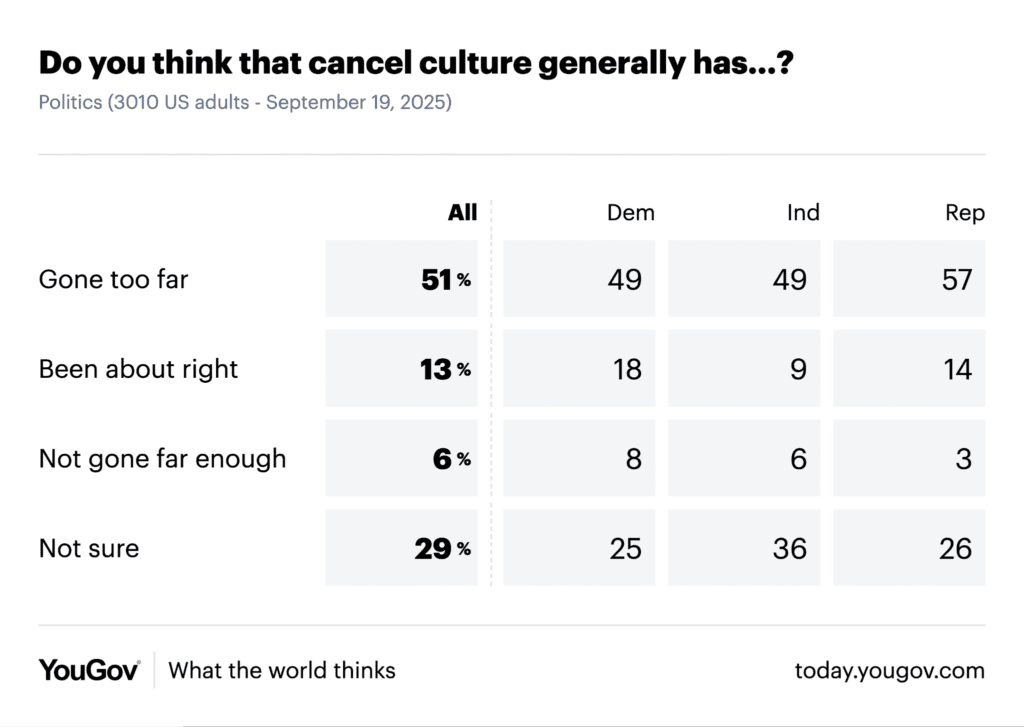

In the wake of the suspension, YouGov asked Americans if they thought ‘cancel culture had gone too far’ with 51% agreeing overall and finding agreement across the political spectrum.
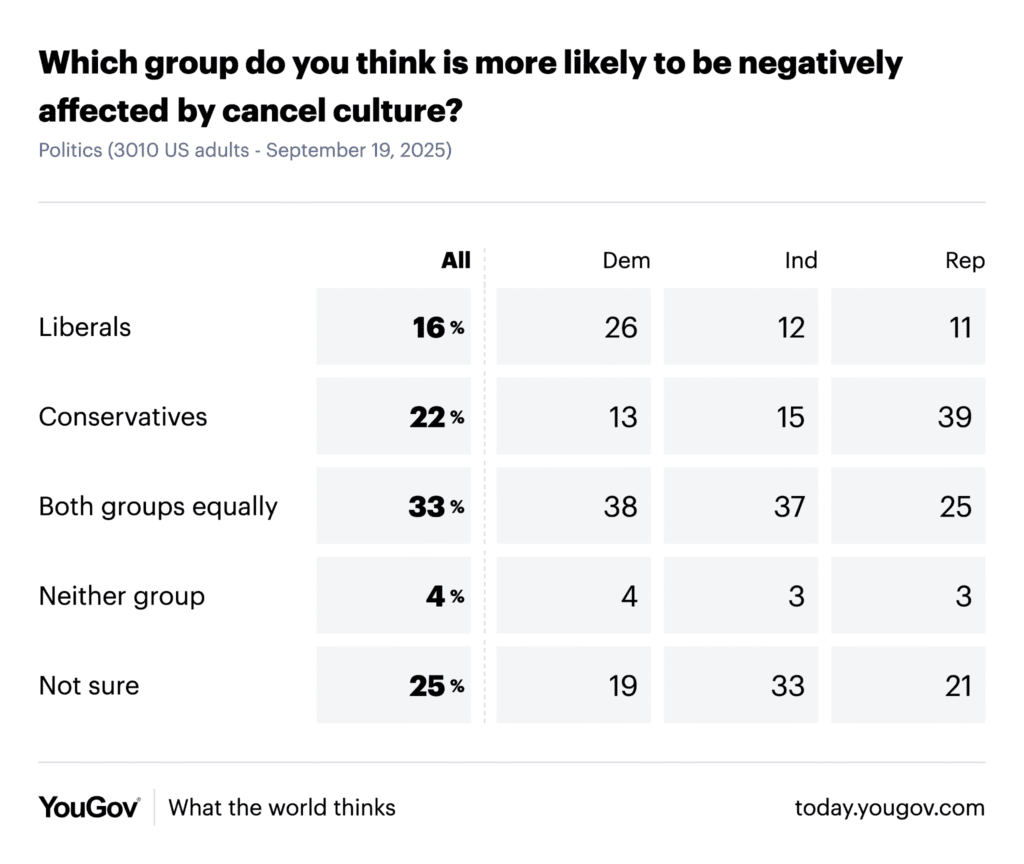

While Republicans are more likely to believe ‘cancel culture’ affects their party more than others, political differences are shrinking when it comes to the first amendment and censorship. Between 2022 and 2025, agreement on whether the government is the biggest threat to free speech has aligned to within 5% across parties. In addition, beliefs that free speech ‘doesn’t mean freedom from consequences’ and the ‘the norms of free speech change too quickly to keep up with’ have both aligned to within 10% across parties.
As political narratives shift around free speech and dissent, it seems that more Americans feel at risk and what was once a cultural wedge issue may become more of a shared cause across parties – especially if Late Night TV stays a censorship battle ground.
4.) AI: Life Coach or Co-Worker?
OpenAI and Anthropic both released new datasets this week highlighting how people use AI and the picture it paints is one of growing audiences, with mostly narrow uses. OpenAI reports over 700m weekly active users sending over 18bn weekly messages, scaling from under 100m wau in January 2024. However, this scaling is seemingly built around personal use over work, as 70% of ChatGPT use is currently personal.
OpenAI divides usage into ‘asking’, ‘doing’ and ‘expressing’ and finds that 49% of messages are ‘asking’, which finds users utilizing AI for information over task completion. So far, the data shows that we see AI as a life advisor and information source vs. something we’re outsourcing work to. For technology that’s made radical productivity claims, a lack of work integration may signal a looming challenge for AI platforms.
// Chart of the Week: We’re Not Just Connected Globally, We’re ‘Always On’


New research from Pew highlights that we aren’t just globally connected, we’re globally always online. Across 24 countries, most adults say they’re online ‘almost constantly’ (28%) or at least several times a day (40%) with younger audiences most likely to be always online. Across countries, younger people were most likely to be constantly online in Japan (85% of 18-34s), Spain (70%), Turkey (64%) and South Korea (68%), while Greece (27%), India (28%), South Africa (29%), Kenya (20%) and Nigeria (15%) saw the most offline youth.
// Ads You Might Have Missed:
1.) ‘Keep Thinking with Claude’ – Anthropic:
AI platforms have reached a turning point when it comes to creativity, explicitly moving to show how they can empower today’s creatives vs. talking about AI’s future potential. In the face of lingering fears around copyright, creative careers and AI’s role in creativity, firms like OpenAI have recruited its first Global chief and announced a feature length film.
Competitor Anthropic has launched a new ad ‘Keep Thinking with Claude’, which tries to directly defuse AI worry for doers, creatives and problem solves. Striking a simultaneously retro and inspiring tone, the ad leverages a take on the refrain ‘There’s never been a better time to be alive’, with ‘There’s never been a better time to be a problem solver’. The challenge, potentially true with both, is while it is academically true, it’s often emotionally wrong. Asking the viewer to put emotional fears aside in rational ways often struggles to deliver the intended impact.
2.) ‘Drop In’ – EA Skate:
To launch a new edition of cult video game ‘Skate’, a decade after the last entry, EA sports recreated the game’s skatable ‘San Vansterdam’ in a new ad. Multitudes of professional skaters from the past and present were invited to skate and hang out on a course recreating the city, with the ad capturing the skating, and community that emerged. The ad mirrors the sense of community found around skating and the game’s previous iterations – putting skating culture on show in an authentic way that celebrates what powers the game’s popularity instead of hard selling it.


3.) ‘The only 343…” – Paddy Power:
English Premier League team Manchester United has had, despite a win at Chelsea this weekend, a regrettable start to the season. Something betting brand Paddy Power has subtly trolled in a bus ad that highlights the struggling 3-4-3 formation of coach Ruben Amorim. While the Manchester 343 normally runs from Oldham to Hyde, the brand (famous for everything from inflatable statues to branded underwear) managed to get a special stunt service which highlights how subtlety can still exist in football trolling.
// Sunday Snippets
// Marketing & Advertising //
– UK sausage roll retailer Gregg’s has launched a food inspired homegoods range [Marketing]
– Carvana team up with Shaquille O’Neal to launch an AI powered shopping bot [AI]
– Big brands are playing down their ‘American-ness’ abroad [Brands]
– How do you successfully collaborate with a rival brand? [Marketing]
// Technology & Media //
– Many Americans don’t know they’re losing EV tax credits yet, but it will reshape the market [Auto]
– Pinterest launches shopper links to get more data on retailer activity for brands [Social Media]
– Samsung is bringing ads to US smart fridges [Media]
– Amazon launches an Agentic AI creative studio to help build ads for sellers [AI]
– Roku is introducing GenAI ad solutions for SMBs [AI]
– EA26 enables the dream (or nightmare) of a team of just Zlatans [Gaming]
– 90s nostalgia hits Switch with a ‘Virtual Boy’ accessory [Gaming]
– How does OOH advertising integrate into modern cities responsibly? [Media]
– Chrome unveils upcoming AI browser enhancements [AI]
– Benchmarking LLMs for Creative Effectiveness [AI]
– Massive Attack uses facial recognition to turn a concert into a surveillance experiment [Music]
// Life & Culture //
– What happens when the ‘manosphere’ hits plastic surgery? [Culture]
– The US AMEX Platinum card refresh is here, with a higher fee and new rewards like Lululemon credits and more – raising luxury card stakes [Finance]
– Does everyone really have a Chinese peptide dealer now? [Health]
– Carbone London’s reviews are pretty brutal [Food]
– Ed Sheeran announces plans for a posthumous album ‘Eject’ upon his death [Music]
– What is Britain’s favourite sitcom? [TV]
// Until Next Sunday
As always, let me know what you think by email (dubose@newclassic.agency), website or on LinkedIn.
You can also listen to an audio summary and discussion of each week’s newsletter on Spotify. We’re also on TikTok!
